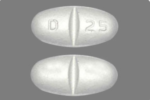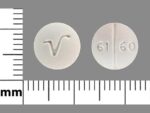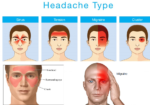Headaches can be caused by a wide range of factors, and most of them are not dangerous. However, there are certain types of headaches that can be indicative of underlying medical conditions and may require prompt medical attention.
Here are some types of headaches that can be considered potentially dangerous:
- Migraine with Aura: While migraines themselves are not typically dangerous, some people experience auras before or during a migraine attack. Auras are sensory disturbances like visual disturbances (flashing lights or blind spots) or tingling sensations. In rare cases, auras can be a sign of a more serious neurological condition.
- Thunderclap Headache: This is a sudden, severe headache that comes on rapidly and reaches its peak intensity within a minute. Thunderclap headaches can be caused by serious conditions such as a ruptured blood vessel in the brain (aneurysm), meningitis, or a hemorrhagic stroke.
- Cluster Headache: Cluster headaches are extremely painful and occur in cyclical patterns or clusters. Although they are not typically life-threatening, the intense pain can be debilitating. It’s essential to rule out other potential causes and seek medical evaluation.
- Headache after Head Injury: If you experience a headache following a head injury, it could be a sign of a concussion or a more severe brain injury. It’s crucial to seek immediate medical attention in such cases.
- Headaches in Older Adults: New, persistent headaches in older adults, especially those with a history of cancer, should be evaluated by a healthcare professional. They could be a symptom of a more serious condition such as a brain tumor.
- Headaches Accompanied by Neurological Symptoms: Headaches that are associated with neurological symptoms like weakness, numbness, slurred speech, confusion, or difficulty with coordination should be taken seriously, as they could be a sign of a stroke or other neurological disorder.
- Headaches in Pregnancy: If you are pregnant and experience severe headaches, it’s important to consult with your healthcare provider. Some headaches during pregnancy can be a sign of preeclampsia, a potentially serious condition.
- Persistent, Worsening Headaches: Any headache that is persistent, worsening over time, or significantly different from your usual headache pattern should be evaluated by a healthcare professional. It could be a sign of an underlying medical condition.
It’s important to note that the vast majority of headaches are not dangerous and can be managed with over-the-counter pain relievers, rest, hydration, and lifestyle changes. However, if you experience any of the above-mentioned types of headaches or have concerns about your headaches, it’s essential to seek medical advice promptly to determine the cause and appropriate treatment.

The Danger Signs of Headache ?
Certainly, here are more detailed explanations of the danger signs associated with headaches that should prompt you to seek immediate medical attention:
- Sudden and Severe Pain:
- This type of headache is often described as a “thunderclap headache.” It comes on suddenly and reaches maximum intensity within seconds or minutes.
- The pain is typically excruciating and is often described as the worst headache ever experienced.
- It can be a sign of a ruptured cerebral blood vessel (aneurysm), hemorrhagic stroke, or other life-threatening conditions that require immediate medical evaluation.
- Neurological Symptoms:
- Headaches accompanied by neurological symptoms such as sudden weakness, numbness or tingling on one side of the body, vision changes (e.g., double vision or loss of vision), difficulty speaking, confusion, or loss of consciousness are serious.
- These symptoms may suggest a stroke, transient ischemic attack (TIA), or other neurological problems that require urgent medical attention.
- Head Injury:
- If you’ve experienced a head injury, such as a blow to the head from a fall or accident, and you develop a headache afterward, especially if the headache is worsening over time, it could indicate a concussion or a more severe brain injury.
- It’s important to get evaluated by a healthcare professional to rule out serious head trauma.
- Fever and Stiff Neck:
- A severe headache accompanied by a high fever and a stiff neck may indicate meningitis, which is an infection of the protective membranes around the brain and spinal cord.
- Meningitis can progress rapidly and is a medical emergency.
- Changes in Speech or Coordination:
- Headaches associated with sudden difficulties in speech, coordination, or muscle strength should be taken seriously.
- These symptoms may signal a stroke or another neurological condition requiring immediate medical intervention.
- Headaches in Pregnancy:
- Pregnant women experiencing severe headaches, particularly if they are accompanied by visual disturbances (such as blurred vision), high blood pressure, or swelling, should contact their healthcare provider promptly.
- These could be signs of preeclampsia, a condition that can have serious implications for both mother and baby.
- New-Onset Headaches in Older Adults:
- Older adults who develop new, persistent headaches, especially if they have a history of cancer, should seek medical evaluation.
- Rarely, new-onset headaches in older adults can be associated with serious conditions such as brain tumors.
- Headaches with Altered Mental Status:
- Headaches accompanied by confusion, disorientation, or a change in mental status should be evaluated urgently.
- These symptoms can be indicative of various underlying medical issues, including infections or metabolic disturbances.
- Recurring or Persistent Headaches:
- If you have a headache that keeps coming back, lasts for an extended period, or is significantly different from your usual headache pattern, it’s essential to consult with a healthcare professional to rule out any underlying causes.
- Exacerbation with Exertion:
- If your headache becomes significantly worse during activities that increase intra-abdominal pressure (like coughing, sneezing, or lifting heavy objects), it may be a sign of increased intracranial pressure.
- This can be due to various causes, including mass lesions in the brain, and should be evaluated by a medical professional.
Remember that while these danger signs are concerning, most headaches are not related to life-threatening conditions. However, it’s crucial to be aware of these warning signs and seek immediate medical attention if you experience them to ensure appropriate evaluation and treatment.
The Headache That Require a Visit to The Emergency Clinic
Headaches that require a visit to the emergency clinic (or emergency room) often exhibit severe symptoms or are associated with potentially life-threatening conditions. If you experience any of the following types of headaches, it is essential to seek immediate medical attention by going to the nearest emergency room or calling emergency services:
- Thunderclap Headache:
- Sudden, excruciating headache that peaks within seconds or minutes.
- Described as the worst headache ever.
- May be a sign of a ruptured cerebral aneurysm or hemorrhagic stroke.
- Migraine with Aura and Neurological Symptoms:
- A migraine accompanied by unusual neurological symptoms, such as weakness, confusion, loss of consciousness, or difficulty speaking.
- It could be a sign of a more severe condition that requires immediate evaluation.
- Stroke Symptoms with Headache:
- Sudden and severe headache, especially when associated with stroke symptoms like facial drooping, arm weakness, or speech difficulties.
- A headache can sometimes be a symptom of an impending stroke.
- Head Injury with Altered Mental Status:
- If you experience a head injury and develop a headache along with altered mental status, confusion, vomiting, or loss of consciousness.
- These symptoms may indicate a severe brain injury.
- Fever, Stiff Neck, and Headache:
- A headache accompanied by a high fever, a stiff neck, and sensitivity to light (photophobia).
- These signs can indicate meningitis, a serious infection that requires immediate treatment.
- Cluster Headache:
- Cluster headaches are extremely intense and often described as a stabbing or piercing pain.
- If you have a known history of cluster headaches and experience a particularly severe episode, you may need immediate medical attention.
- Headache after a Seizure:
- If you experience a headache after a seizure, especially if it’s a new symptom, seek emergency care.
- It could be related to a more significant neurological issue.
- Headache with Blurred Vision or Blindness:
- If you develop a headache along with sudden blurred vision or complete loss of vision, it may indicate a serious eye or neurological problem.
- Immediate evaluation is crucial.
- Headaches in Pregnancy with High Blood Pressure:
- Pregnant women with severe headaches, high blood pressure, visual disturbances, or swelling may have preeclampsia.
- Preeclampsia can be life-threatening to both the mother and baby and requires emergency medical care.
- Headaches with Altered Speech and Coordination:
- If your headache is accompanied by slurred speech, difficulty with coordination, or sudden weakness on one side of your body, it may be a sign of a stroke or another neurological issue.
- Problems with blood vessels and bleeding in the brain
- Anomalies in the connections between arteries and veins in the brain, typically formed before birth, referred to as an arteriovenous malformation (AVM).
- Interruption of blood flow to a specific area of the brain, resulting in a stroke.
- Weakening of the blood vessel wall, which can rupture and cause bleeding inside the brain, known as a brain aneurysm.
- Hemorrhaging within the brain, termed an intracerebral hematoma.
- Bleeding occurring around the brain, which can manifest as a subarachnoid hemorrhage, subdural hematoma, or epidural hematoma.
- Formation of blood clots in the brain’s veins, obstructing the outflow of blood, a condition known as sinus thrombosis.
- Acute Hydrocephalus: Occurs when there’s a disruption in the flow of cerebrospinal fluid, leading to increased pressure within the brain.
- Severely High Blood Pressure: Hypertension that is dangerously elevated can trigger severe headaches and may indicate a medical emergency.
- Brain Tumor: The presence of a brain tumor can lead to persistent and often severe headaches. Timely diagnosis and treatment are essential.
- Brain Swelling (Brain Edema): Headaches resulting from brain swelling, which can be caused by altitude sickness, carbon monoxide poisoning, or acute brain injuries, require immediate attention.
- Pseudotumor Cerebri (Idiopathic Intracranial Hypertension): A condition characterized by increased pressure inside the skull that mimics the symptoms of a brain tumor but does not involve a tumor. It requires prompt evaluation.
- Brain Infection or Abscess: Infections within the brain or the surrounding tissues, as well as the presence of a brain abscess, necessitate urgent medical care.
- Temporal Arteritis (Giant Cell Arteritis): Inflammation of the temporal artery, which supplies blood to the head, temple, and neck area, can lead to severe headaches and may indicate a serious vascular condition requiring prompt treatment.
These are situations where seeking emergency medical care is critical. Do not hesitate to call 911 or visit the nearest emergency clinic if you experience any of these symptoms or if you are unsure about the severity of your headache. It’s always better to err on the side of caution when dealing with potentially life-threatening conditions.
Pain Medications, Pain Relief, and Pain Management








